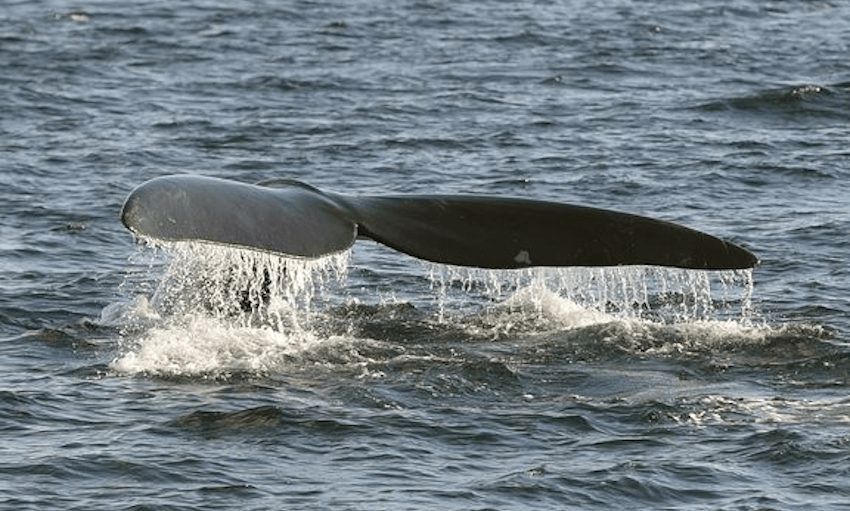A NIWA scientist explains what they’ve discovered about the whale in Wellington harbour so far.
We’re used to traffic jams in Wellington, but when they come with people lining the harbour foreshore all pointing out to sea, it’s clear you can’t just blame them on the usual city congestion.
For the past week, a southern right whale has graced the waters of Wellington harbour, captivating – and delaying – Wellingtonians. It’s a rare sight these days and it’s not going too far to say its regular breaching and surface activity lifted the spirits of everyone just in time to cope with a patch of particularly poor weather.
Southern right whales would have been common in Wellington harbour before the intensive whaling of previous centuries. This particular species is so named for being the “right” whale to kill; among other interesting features, they often swim slowly, and float when they’re dead. Southern right whale numbers are still recovering from hunting.
Within New Zealand waters, a major breeding population of southern right whales congregates around the sub-Antarctic Auckland Islands each year; mother-calf pairs are also seen around mainland New Zealand during July and August.
Having one in Wellington harbour could optimistically be viewed as a sign that the animals are returning to the habitat they were once found in.
Last week NIWA and the Department of Conservation went out to obtain a skin biopsy of the visiting whale, and to make some underwater recordings in the hope of capturing any calls it might make.
Results of the biopsy are some way off and as yet, there is no scientific evidence to indicate whether it is male or female. There is also nothing to indicate that we need to be concerned about the behaviour or health of the whale. On the breeding grounds, southern right whales are generally active at the surface, and commonly spend time in water depths only slightly deeper than their own body.
NIWA has been leading acoustic research in the Cook Strait region, recording the sounds made by whales and dolphins, and finding several species that had not previously been known to pass through the area. That’s why we were keen to see if we could record the sounds of this visiting whale and perhaps verify some of our previous recordings.
Earlier in the week, some passive acoustic equipment was placed into the water and about 70 minutes of data were obtained when the animal was within about 100m of the boat. We were keen to hear “gunshots” – a sound primarily produced by males that is a broadband with a short duration, and travels effectively through water. Female right whales also produce gunshots but these are less common and quieter than the ones produced by males.
We didn’t hear any gunshots in our data, but we did record three sounds potentially produced by the whale, known as upcalls and downcalls. Unfortunately, each lasted less than one second making it difficult to determine their source. The engine of the NIWA boat was turned off, but as the whale is in a busy harbor, we recorded a lot of vessel traffic noise, making it tricky to distinguish whale calls.
You can listen to the calls of a North Atlantic right whale here. It’s not quite a southern right, but they are very similar.
There’s still a lot we don’t know about the southern right whale in Wellington harbour. We do know it doesn’t really need to feed over winter but will do so if the opportunity arises, and we don’t know how long it will stay.
But at some point between September and November it will most likely feel a migrational urge to head back south. If we have it in the harbour until then, expect a few more traffic jams.
Victoria Warren is a University of Auckland PhD student based at NIWA, Wellington. She is studying baleen whales in the Cook Strait region using passive acoustic monitoring.
The Spinoff’s science content is made possible thanks to the support of The MacDiarmid Institute for Advanced Materials and Nanotechnology, a national institute devoted to scientific research.

